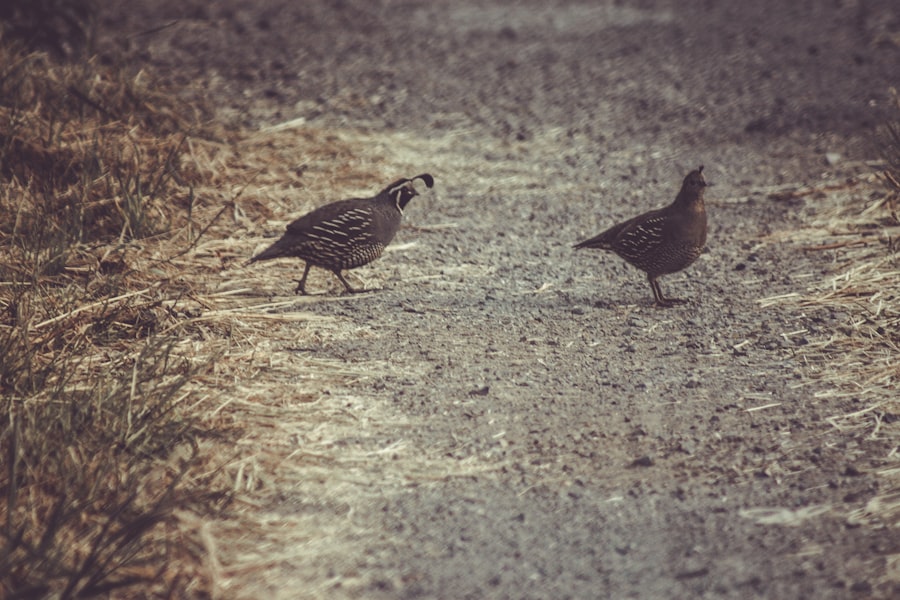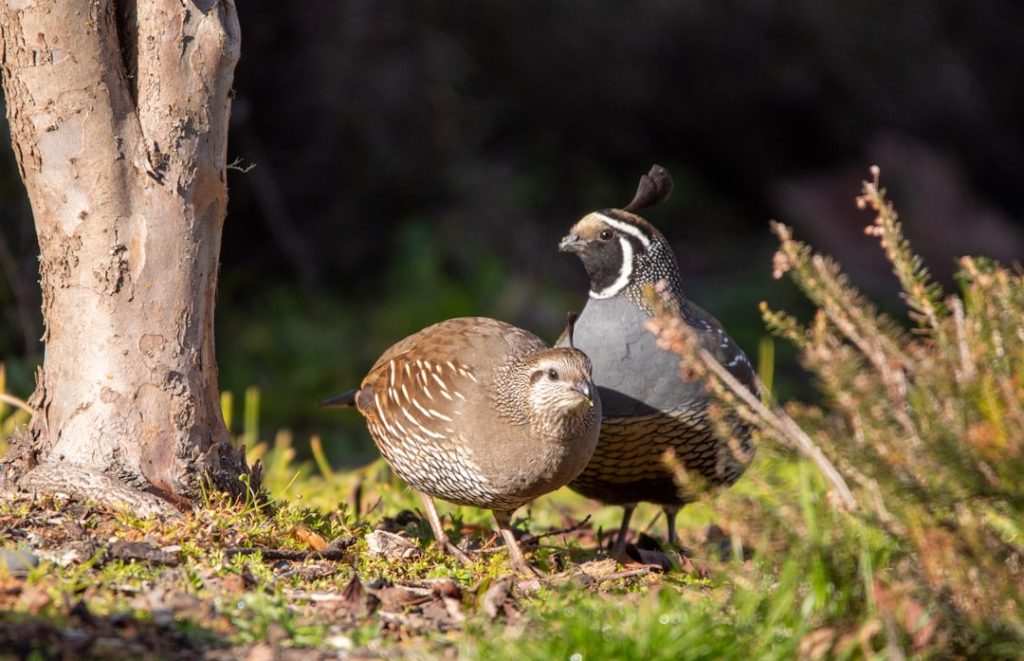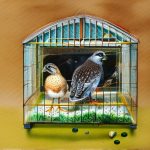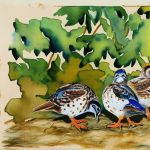Quail are small, ground-dwelling birds that belong to the family Phasianidae. There are several common breeds of quail that are popular among bird enthusiasts and farmers alike. These breeds vary in size, color, and behavior, making them a diverse and interesting group of birds to learn about and raise. In this article, we will explore some of the most common breeds of quail, including the Coturnix quail, Bobwhite quail, California quail, Gambel’s quail, Japanese quail, and Button quail. Each of these breeds has its own unique characteristics and qualities that make them well-suited for different purposes, whether it be for meat production, egg laying, or simply as pets.
Table of Contents
- 1 Coturnix Quail: A Popular Choice for Beginners
- 2 Bobwhite Quail: A Traditional Game Bird
- 3 California Quail: A Colorful and Sociable Species
- 4 Gambel’s Quail: A Desert Dweller with Unique Plumage
- 5 Japanese Quail: A Small but Prolific Egg Producer
- 6 Button Quail: A Tiny and Unique Avian Species
- 7 FAQs
- 7.1 What are some common breeds of quail?
- 7.2 What are the characteristics of Coturnix quail?
- 7.3 What are the characteristics of Bobwhite quail?
- 7.4 What are the characteristics of California quail?
- 7.5 What are the characteristics of Gambel’s quail?
- 7.6 What are the characteristics of Mountain quail?
Key Takeaways
- Quail are popular game birds and backyard poultry, with several common breeds including Coturnix, Bobwhite, California, Gambel’s, Japanese, and Button quail.
- Coturnix quail are a popular choice for beginners due to their small size, easy care, and prolific egg production.
- Bobwhite quail are traditional game birds known for their distinctive call and are popular for hunting and as pets.
- California quail are colorful and sociable birds, known for their distinctive topknot and tendency to gather in large coveys.
- Gambel’s quail are desert dwellers with unique plumage, known for their distinctive topknot and preference for arid habitats.
- Japanese quail are small but prolific egg producers, making them popular for commercial egg production and as pets.
- Button quail are tiny and unique avian species, known for their small size and distinctive button-like appearance.
Coturnix Quail: A Popular Choice for Beginners
The Coturnix quail, also known as the Japanese quail, is one of the most popular breeds of quail for beginners. They are small in size, easy to care for, and are prolific egg layers, making them a great choice for those who are interested in raising quail for their eggs. Coturnix quail come in a variety of colors, including brown, white, and speckled, and they are known for their gentle and sociable nature. They are also relatively quiet birds, making them well-suited for urban or suburban environments where noise may be a concern. Additionally, Coturnix quail mature quickly and are ready to start laying eggs at around 6-8 weeks of age, making them a practical choice for those who are looking to start a small-scale egg production operation.
On the other hand, Coturnix quail are also raised for their meat, as they have a delicate and flavorful flesh that is highly sought after by chefs and food enthusiasts. Their small size makes them easy to process and prepare, and their meat is considered a delicacy in many parts of the world. Overall, the Coturnix quail is a versatile and practical breed that is well-suited for beginners who are interested in raising quail for eggs, meat, or simply as pets.
Bobwhite Quail: A Traditional Game Bird
The Bobwhite quail is a traditional game bird that is native to North America. They are known for their distinctive call, which sounds like “bob-white,” and they are popular among hunters for their fast flying and challenging behavior. Bobwhite quail are medium-sized birds with mottled brown and white plumage, and they have a strong and agile build that allows them to navigate through dense vegetation with ease. In the wild, Bobwhite quail are found in grasslands, open woodlands, and agricultural fields, where they feed on seeds, insects, and small invertebrates.
In addition to being popular among hunters, Bobwhite quail are also raised for release into the wild as part of conservation efforts. They are often used to repopulate areas where their numbers have declined due to habitat loss or overhunting. In captivity, Bobwhite quail require a spacious aviary or pen with plenty of vegetation and hiding spots to mimic their natural habitat. They are relatively easy to care for and can be raised for meat or eggs as well. Overall, the Bobwhite quail is a traditional and iconic breed that is valued for its beauty, behavior, and contribution to conservation efforts.
California Quail: A Colorful and Sociable Species
The California quail is a colorful and sociable species that is native to the western United States. They are known for their striking plumage, which includes a black face with a bold white stripe, a curved topknot plume, and a mottled brown and gray body. California quail are highly social birds that form large coveys during the non-breeding season, and they are often seen foraging together in open woodlands, brushy areas, and suburban gardens.
In addition to their striking appearance and sociable nature, California quail are also popular among bird enthusiasts for their distinctive call, which sounds like “chi-ca-go.” They are relatively easy to care for in captivity and can be raised for their eggs or simply as pets. However, California quail do require a spacious aviary or pen with plenty of vegetation and hiding spots to keep them happy and healthy. Overall, the California quail is a colorful and sociable species that is well-suited for those who are looking to add a touch of beauty and charm to their aviary or backyard.
Gambel’s Quail: A Desert Dweller with Unique Plumage
Gambel’s quail is a species of quail that is native to the deserts of the southwestern United States and northern Mexico. They are known for their unique plumage, which includes a striking black face with a bold white stripe, a topknot plume that curves forward over the head, and mottled gray and brown body feathers. Gambel’s quail are highly adapted to desert environments and can often be found in arid scrublands, mesquite thickets, and desert washes where they feed on seeds, insects, and small invertebrates.
In addition to their unique appearance and habitat preferences, Gambel’s quail are also popular among bird enthusiasts for their distinctive call, which sounds like “ka-KAA-go.” They are relatively easy to care for in captivity and can be raised for their eggs or simply as pets. However, Gambel’s quail do require a dry and sandy aviary or pen with plenty of hiding spots to mimic their natural habitat. Overall, Gambel’s quail is a desert dweller with unique plumage that is well-suited for those who are looking to add a touch of the southwest to their aviary or backyard.
Japanese Quail: A Small but Prolific Egg Producer

The Japanese quail, also known as the Coturnix quail, is a small but prolific egg producer that is popular among farmers and backyard enthusiasts alike. They are known for their high egg production rates, with some hens laying up to 300 eggs per year. Japanese quail come in a variety of colors, including brown, white, and speckled, and they are relatively easy to care for in captivity. They mature quickly and can start laying eggs at around 6-8 weeks of age, making them a practical choice for those who are looking to start a small-scale egg production operation.
In addition to their prolific egg production rates, Japanese quail are also raised for their meat. They have a delicate and flavorful flesh that is highly sought after by chefs and food enthusiasts. Their small size makes them easy to process and prepare, and their meat is considered a delicacy in many parts of the world. Overall, the Japanese quail is a small but prolific egg producer that is well-suited for those who are looking to raise quail for eggs or meat production.
The Button quail is a tiny and unique avian species that is native to Asia and Africa. They are known for their diminutive size, with some species measuring just 4 inches in length. Button quail come in a variety of colors and patterns, including brown, white, silver, and cinnamon, and they have a distinctive round shape that sets them apart from other breeds of quail. Button quail are relatively quiet birds that are well-suited for urban or suburban environments where noise may be a concern.
In addition to their tiny size and unique appearance, Button quail are also popular among bird enthusiasts for their gentle nature and interesting behavior. They are relatively easy to care for in captivity and can be raised for their eggs or simply as pets. However, Button quail do require a spacious aviary or pen with plenty of hiding spots to keep them happy and healthy. Overall, the Button quail is a tiny and unique avian species that is well-suited for those who are looking to add a touch of charm and novelty to their aviary or backyard.
If you’re interested in learning more about common breeds of quail, you might also want to check out this informative article on creating the perfect chicken coop and nest box at Poultry Wizard. It’s a great resource for poultry enthusiasts looking to provide the best care for their birds.
FAQs
What are some common breeds of quail?
Some common breeds of quail include the Coturnix quail (also known as Japanese quail), Bobwhite quail, California quail, Gambel’s quail, and Mountain quail.
What are the characteristics of Coturnix quail?
Coturnix quail are small birds with a mottled brown and white plumage. They are known for their fast growth rate, high egg production, and adaptability to various environments.
What are the characteristics of Bobwhite quail?
Bobwhite quail are known for their distinctive “bob-white” call. They have a reddish-brown plumage with white and black markings. They are popular game birds and are often raised for hunting purposes.
What are the characteristics of California quail?
California quail are known for their striking appearance, with a black face, chestnut brown plumage, and a teardrop-shaped crest on their head. They are commonly found in the western United States.
What are the characteristics of Gambel’s quail?
Gambel’s quail are known for their distinctive topknot plume on their head. They have a grayish-brown plumage with white and black markings. They are native to the southwestern United States and northern Mexico.
What are the characteristics of Mountain quail?
Mountain quail are known for their unique appearance, with a striking combination of blue, brown, and white plumage. They are found in the mountainous regions of western North America.
Meet Walter, the feathered-friend fanatic of Florida! Nestled in the sunshine state, Walter struts through life with his feathered companions, clucking his way to happiness. With a coop that’s fancier than a five-star hotel, he’s the Don Juan of the chicken world. When he’s not teaching his hens to do the cha-cha, you’ll find him in a heated debate with his prized rooster, Sir Clucks-a-Lot. Walter’s poultry passion is no yolk; he’s the sunny-side-up guy you never knew you needed in your flock of friends!







